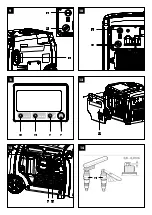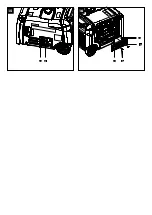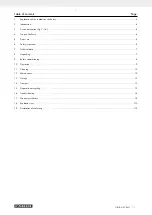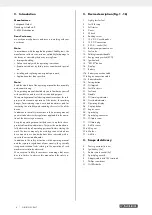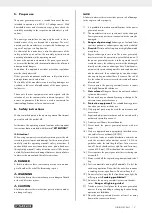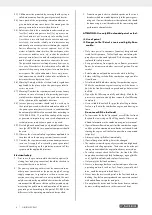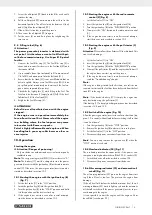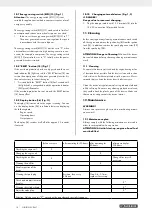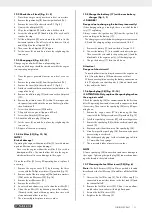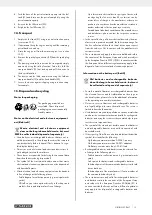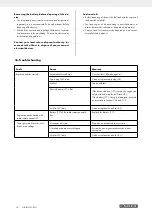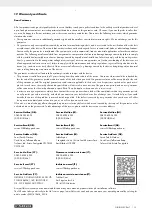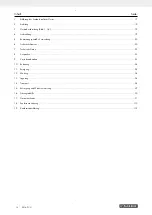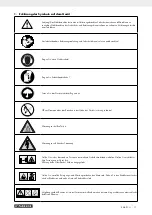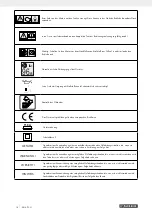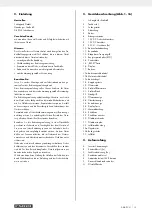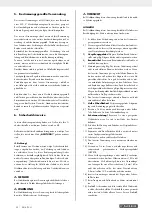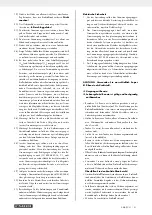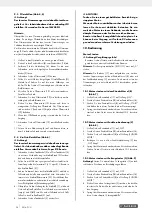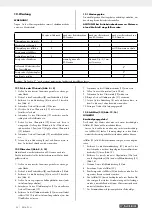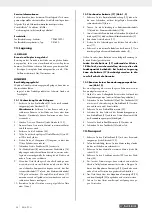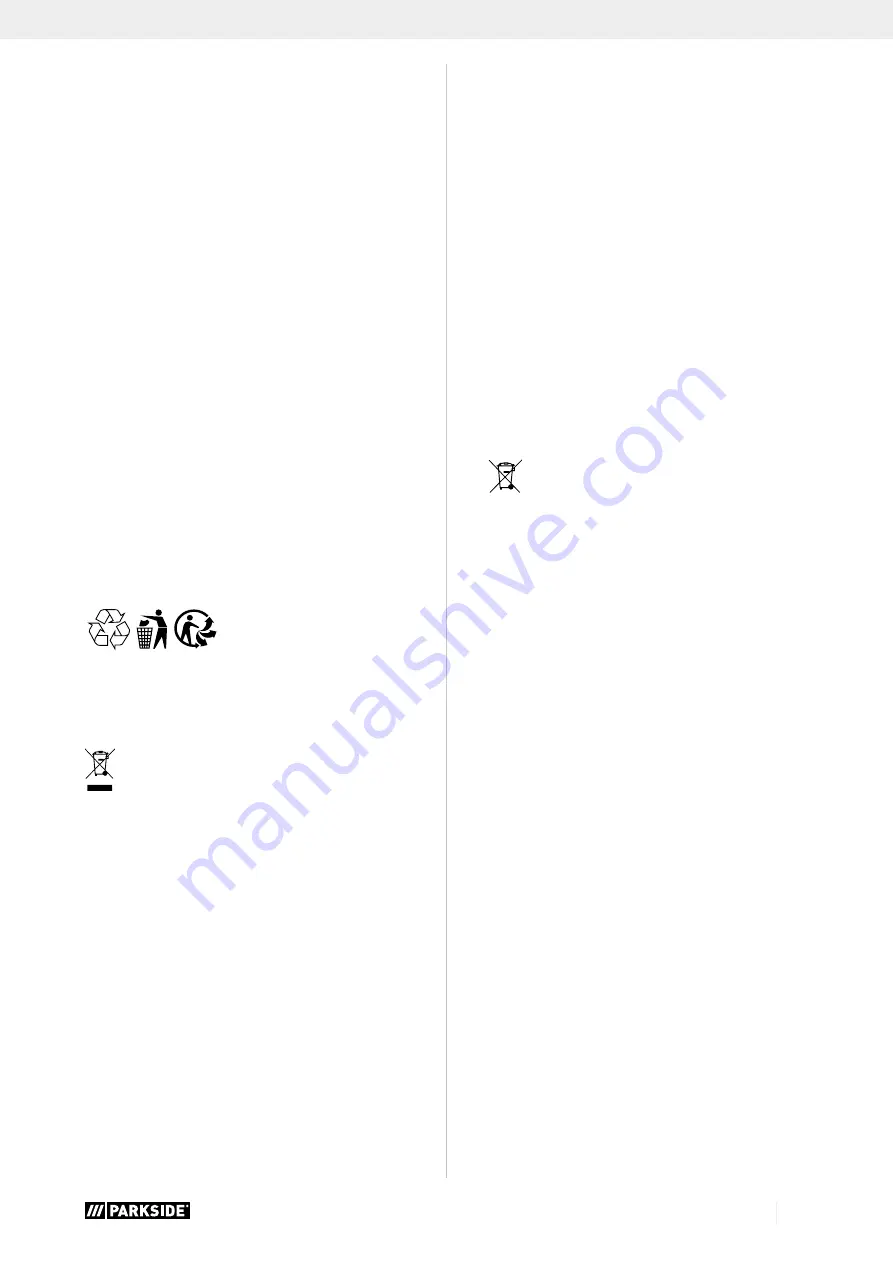
13
GB/IE/NI/CY/MT
4. Push the hose of the petrol extraction pump into the fuel
tank (21) and drain out the petrol completely using the
petrol extraction pump.
5. Reinsert the fuel filter insert (20).
6. Retighten the fuel filler cap (2).
14. Transport
1. Empty the fuel tank (21) using a petrol extraction pump
(see section 13.3).
2. If operational, keep the engine running until the remaining
petrol has been used up.
3. Drain the engine oil from the warm engine (see section
12.3).
4. Remove the spark plug connector (29) from the spark plug
(28).
5. The power generator/inverter can be transported simply
and easily using the trolley function. To do this, fold the
transport handle (12) out and up and pull the device to
the desired location.
6. The device can be lifted and moved using the fold-out
transport handle (12) and the fixed handle (22).
7. Secure the device against slipping using a tension strap,
for example.
15. Disposal and recycling
Notes for packaging
The packaging materials are
recyclable. Please dispose of
packaging in an environmentally
friendly manner.
Notes on the electrical and electronic equipment
act [ElektroG]
Waste electrical and electronic equipment
does not belong in household waste, but must
be collected and disposed of separately!
• Used batteries or rechargeable batteries that are not in-
stalled permanently in the old appliance must be removed
non-destructively before disposal! Their disposal is regu-
lated by the battery act.
• Owners or users of electrical and electronic devices are le-
gally obliged to return them after use.
• The end user is responsible for deleting their personal data
from the old device being disposed of!
• The symbol of the crossed-out dustbin means that waste
electrical and electronic equipment must not be disposed of
with household waste.
• Waste electrical and electronic equipment can be handed
in free of charge at the following places:
- Public disposal or collection points (e.g. municipal works
yards)
- LIDL offers you return options directly in the shops and
markets. Return and disposal are free of charge.
- Up to three waste electrical devices per type of device, with
an edge length of no more than 25 centimetres, can be
returned free of charge to the manufacturer without prior
purchase of a new device from the manufacturer or taken to
another authorised collection point in your vicinity.
- For additional take-back conditions of the manufacturers
and distributors, please contact the respective customer
service.
• In the case of delivery of a new electrical device by the man-
ufacturer to a private household, the latter may arrange for
the free collection of the old electrical device upon request
from the end-user. Get in contact with the manufacturer’s
customer service.
• These statements only apply to devices installed and sold in
the countries of the European Union and which are subject
to the European Directive 2012/19/EU. In countries outside
the European Union, different regulations may apply to the
disposal of waste electrical and electronic equipment.
Information on the battery act [BattG]
Old batteries and rechargeable batteries
do not belong in household waste, but must
be collected or disposed of separately!
• For safe removal of batteries or rechargeable batteries from
the electrical device and for information on their type or
chemical system, please refer to the additional information
in the operating or assembly instructions.
• Owners or users of batteries and rechargeable batteries
are legally obliged to return them after use. The return is
limited to household quantities.
• Used batteries may contain pollutants or heavy metals that
can harm the environment or human health. Recycling used
batteries and using the resources they contain helps to pro-
tect these two important issues.
• The symbol of the crossed-out dustbin means that batteries
and rechargeable batteries must not be disposed of with
household waste.
• If the signs Hg, Cd or Pb are also located below the dustbin
symbol, this stands for the following:
- Hg: Battery contains more than 0.0005% mercury
- Cd: Battery contains more than 0.002% cadmium
- Pb: Battery contains more than 0.004% lead
• Rechargeable batteries and batteries can be returned free
of charge to the following places:
- Public disposal or collection points (e.g. municipal works
yards)
- Sales points for batteries and rechargeable batteries
- Take-back points of the common take-back system for old
device batteries
- Take-back point of the manufacturer (if not a member of
the common take-back system)
• These statements are only valid for rechargeable batteries
and batteries sold in the countries of the European Union
and subject to the European Directive 2006/66/EC. In
countries outside the European Union, different regulations
may apply to the disposal of rechargeable batteries and
batteries.
Summary of Contents for PISE 3400 A1
Page 3: ...1 4 3 1 2 5 7 8 9 10 11 13 14 15 16 12 6 2 A B C D E F G...
Page 4: ...5 19 4 B 4 4 B 7 11 B 6 21 2 20 22 8 11 B 3 B 17b 17a 17 10 17c 18...
Page 5: ...9 3 11 B 10 11 B 13 28 29 12 27 Low Oil Overload Disp 11 23 24 25 26 14 28...
Page 6: ...16 33 32 15 30 31 32b 32a...
Page 117: ...111 18 18 18 18 18 18 18 18 18 18 18 18 18 18 18 18 18 18 18 18 18 18 18...
Page 119: ......

